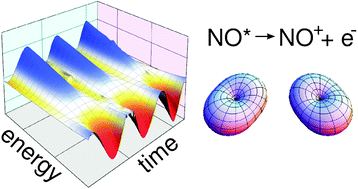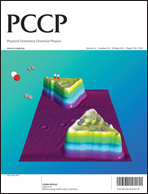Time–energy mapping of photoelectron angular distribution: application to photoionization stereodynamics of nitric oxide†
Abstract
The time–energy mapping of the photoionization integral cross section and laboratory-frame photoelectron angular distribution is used to study photoionization stereodynamics of a diatomic molecule. The general theoretical formalism [Y. Suzuki and T. Suzuki, Mol. Phys., 2007, 105, 1675] is simplified for application to a diatomic molecule, and a high-resolution photoelectron imaging apparatus is used to determine the transition dipole moments and phase shifts of photoelectron partial waves in near-threshold and non-dissociative photoionization of NO from the A2Σ+ state. The transition dipoles and phase shifts thus determined are in reasonable agreement with those by state-to-state photoionization experiment and Schwinger variational calculations. The difference of the phase shifts from those expected from the quantum defects of Rydberg states suggests occurrence of weak hybridization of different l-waves, in addition to the well-known s–d super complex. The circular dichroism in photoelectron angular distribution is also simulated from our results.


 Please wait while we load your content...
Please wait while we load your content...